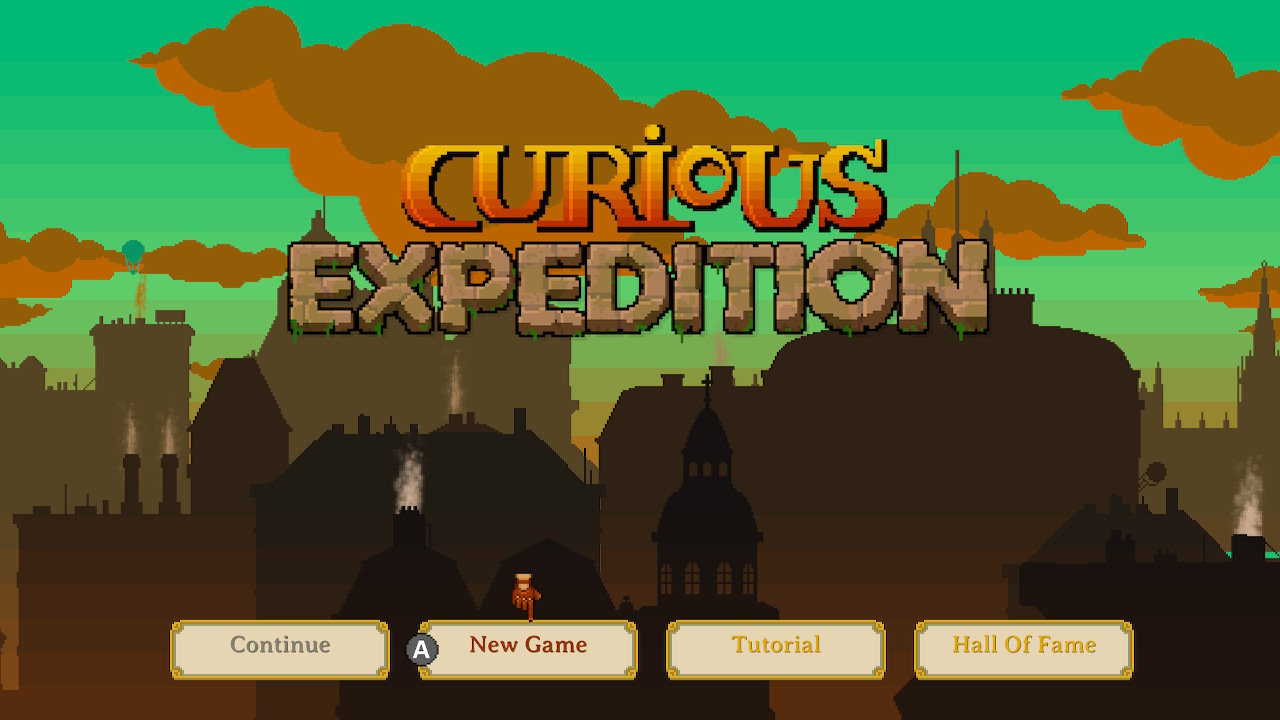[Review] Curious Expedition – Nintendo Switch
Curious Expedition
Nintendo Switch
Developed By: Maschinen Mensch
Published By: Thunderful
Category: Adventure, Board Game, Simulation, Strategy
Release Date: 04.02.20
I have to question whether this is the proper political climate in which to make a game about stealing ancient cultural artifacts to impress rich white folks, but even placing its moral complications aside, I have trouble figuring out if I enjoyed playing Curious Expedition for the Nintendo Switch. It was originally released on the PC in 2016, but recently made the jump to consoles. The gameplay is an interesting combination of the exploration elements from the Civilization series and the expedition management elements of Oregon Trail.
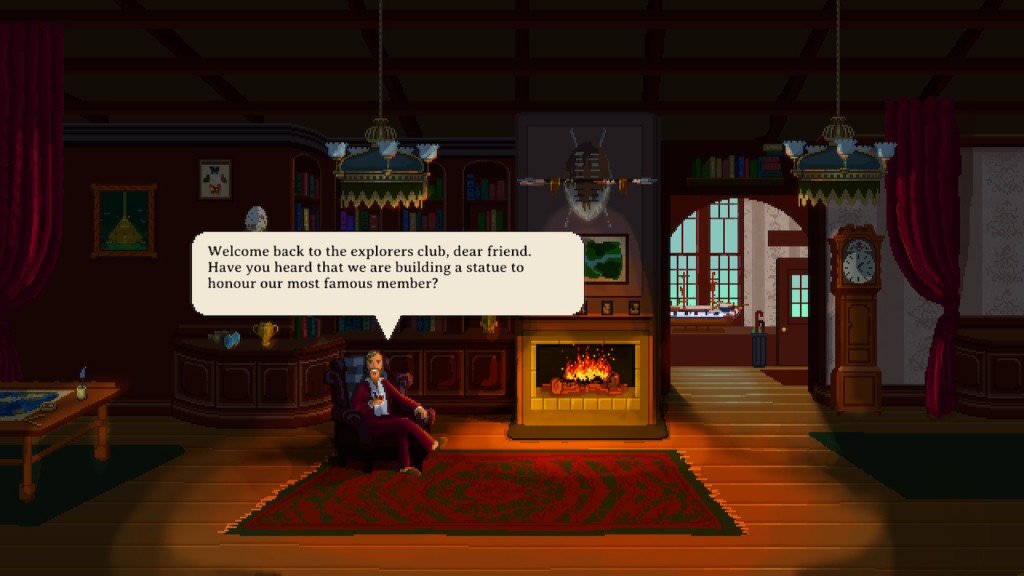
An Amazing Race
The game has you take on the role of a famous historical figure – ranging from explorers to travel writers to aviators – participating in a competition against other explorers to see who can explore and recover the most artifacts from around the world. Each race consists of six expeditions. You travel to different areas of the world with different climates and terrain, and explore the hex-grid maps encountering villages, shrines, tombs, caves, beached ships, and natural phenomena. You can choose to loot – or not to loot – the artifacts you find there. Taking things gets you more fame at home and increases your score, but it also has negative effects like making the local populations more hostile towards you or angering the gods into punishing you by setting off volcanoes or making other drastic terrain alterations.
You have a limited inventory space, so you do have to consider which artifacts to bring with you more carefully than just trying to weigh the terrain penalties and reputation decreases against your potential fame gains. You can bring weapons, food, and exploration items like ropes, snow shows, and machetes for hacking through jungles. Inventory space is pretty fiercely limited; even if you have a full complement of followers and pack animals, space will always be an issue.
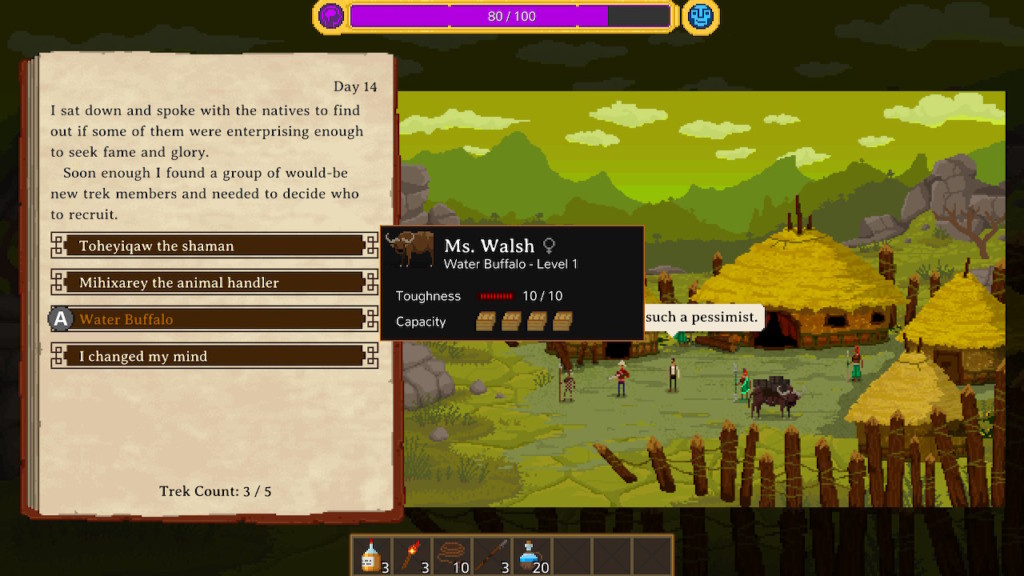
Faithfully Finicky Followers
You can recruit followers from London before your expedition starts or find some local assistance when you arrive at your destination. Different followers have different attributes that help you to survive, explore, or interact with local populations with varying benefits or penalties. Your expedition has a sanity meter that displays the loyalty of your followers. It’s basically like an HP bar across the top of the screen; when you run out of sanity, your followers will start to rebel against you. The bar depletes naturally as you move around the map; the more difficult the terrain you encounter, the more sanity you lose per move. There are items you can bring with you to alleviate terrain penalties, like snow shoes for snow or climbing gear for mountains. You can regain sanity by resting at villages, camping sites, or your ship, or by consuming provisions you bring with you.
Discovering new areas and completing special events gives you points that you can use to upgrade your followers. When they level up, they get more health and one extra ability. Sometimes it will be an extra dice to roll, sometimes it will be a new character trait, and sometimes it will be an extra inventory slot. Whenever you make it back from an expedition, you can pick a special ability for your explorer, too, which offers benefits ranging from extended vision, smaller penalties for movement, to reputation bonuses, just to name a few.
In my first game, I recruited a wonderful water buffalo named Ms. Walsh. She was my favorite. When my crew inevitably ran out of supplies because I didn’t prepare well enough, they demanded we butcher and eat poor Ms. Walsh. I said screw that; Ms. Walsh is worth more than any Scottish Highlander or Animal Trainer could ever hope to be. They were unhappier than ever, but we moved on. Then they mutinied again, killed her anyway, and abandoned me. I almost broke my Switch over my knee. Ms. Walsh RIP.
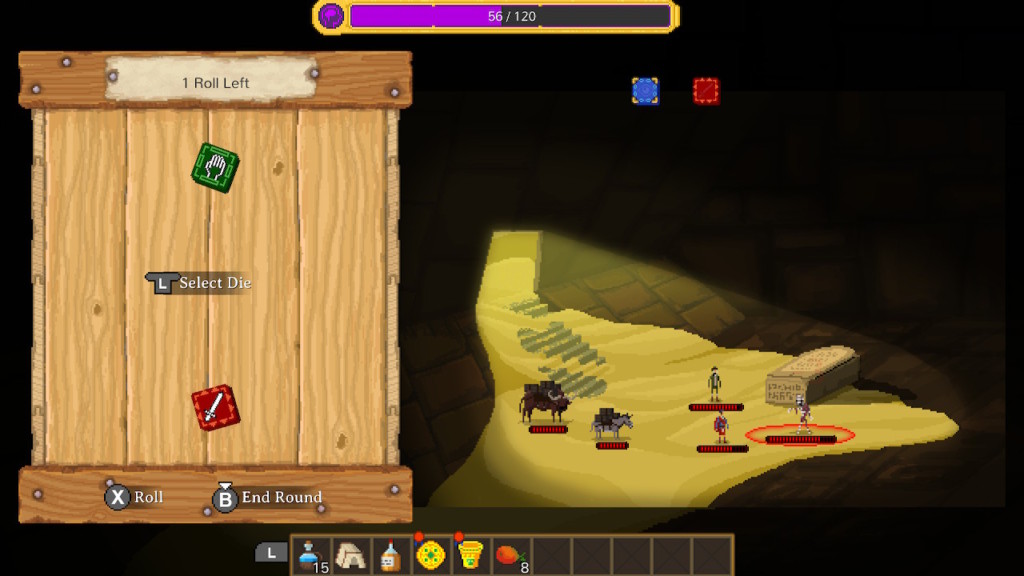
Lions, Tigers, and Bears – Oh My!
You can attack and be attacked by all kinds of different wild animals while on your expeditions; lions, bears, wolves, and velociraptors – yeah, velociraptors. Some weird stuff goes down on these expeditions. I found an interdimensional portal, once. Anyway, yeah, fighting; it’s turn-based, dice-based combat. Your expedition leader and followers all have dice you can roll during combat, with different focuses. The dice are also used for narrative challenges from time to time, but they’re mostly for fighting. You can combine your characters’ dice roll results to create different combos. Different types of followers have differently-colored dice. Generally, red dice are for attacking, green are for defending, and blue dice enhance the effect of the other two dice in combos.
The combat system is fairly interesting in concept, but in practice it’s not especially fun or appealing. Frankly, if you don’t have a character with a red die to roll, you should just run instead of trying to actually fight anything because you can’t really attack. Animals won’t attack unless you enter their field of vision – marked off by a red barrier on the tiles around them – so avoiding them isn’t all that hard. The extra movement generally results in less of a sanity penalty than running from a fight, so if you only brought pacifists you’ll want to avoid confrontation. This gets harder in certain areas flooded with beasties; sometimes the predators are so thick it’s impossible to avoid a fight.
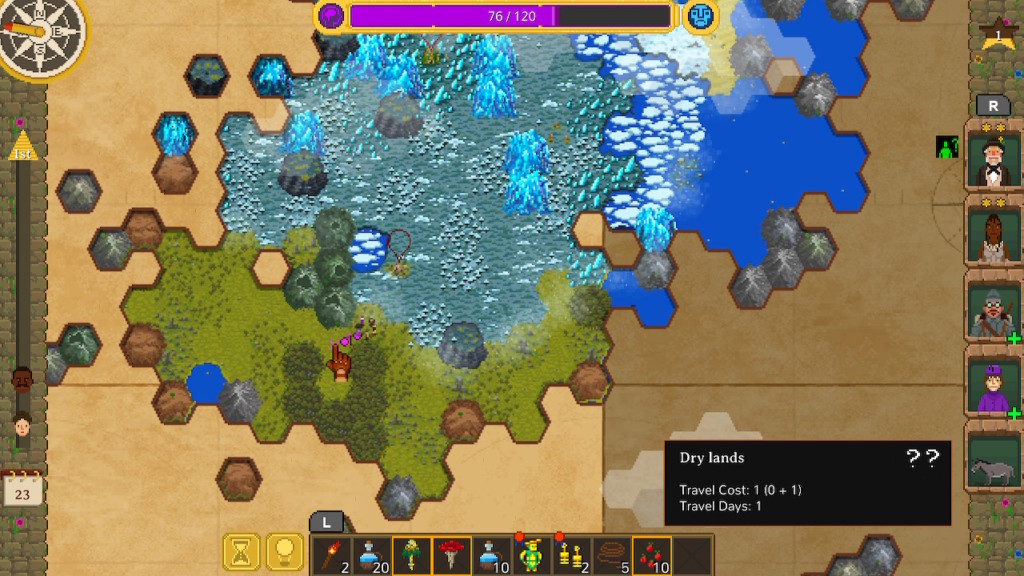
She Works Hard For the Money
There is considerable slowdown when there’s a lot happening onscreen, like uncovering a large area of hexes or a lot of animals moving around the screen. It worried me to hear how hard my Switch was struggling to keep up with the game, too; the fan kicked into overdrive and that thing was loud enough to hear over the game music and the TV I had on in the background. The fans were going so hard it felt like the system’s rumble feature was activated. It was so loud and shaky that I don’t know how much I trusted the game to keep playing it; Switches are hard to come by right now. I don’t need this game blowing it up.
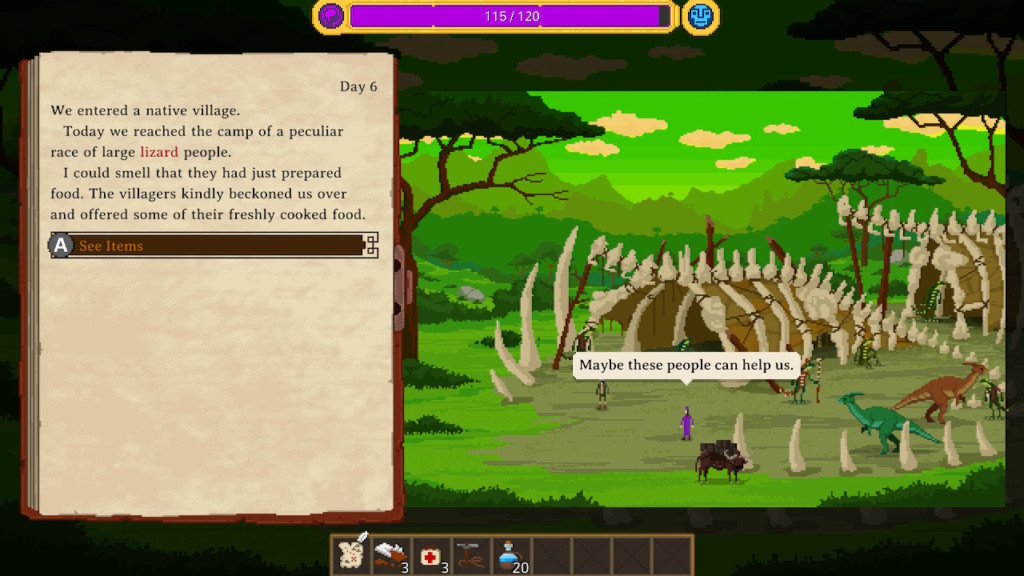
Ancient Art Style for Exploring Ancient Ruins
I didn’t necessarily enjoy some parts of the gameplay, but I loved the graphics in Curious Expedition. The game features exquisitely detailed pixel art at times. The world map looks right out of Civilization II, which is a nice blast of nostalgia, but what really blew me away were the event images that accompanied the text interactions when I was exploring certain locations like villages or temples. These background images are wonderfully rendered in a very intricate level of detail. I lost myself tracking the small details in every village, cavern, and stone circle I encountered, marveling at the rich imagery on display.
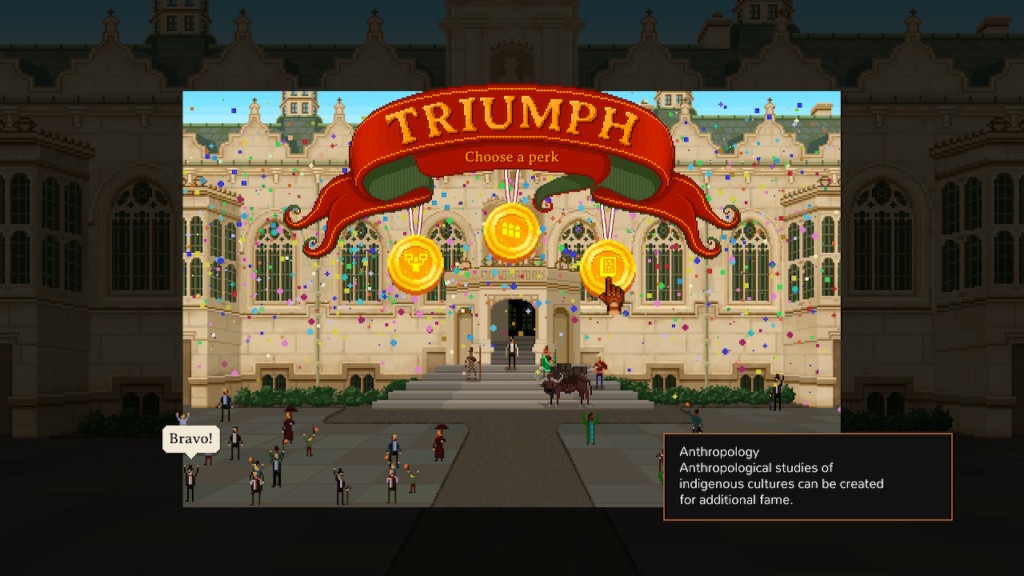
Did We Discover a Winner?
I’m conflicted about how to feel about my time with Curious Expedition. On the one hand, I loved the graphics and Ms. Walsh. The follower morale and inventory systems worked fine and made the game more challenging, but often felt a little too restrictive or oppressive and made learning the ins and outs of the game harder. I wouldn’t say they put me off the game early on, but they did hurt my interest in the game at the outset. I just didn’t like the combat system, and the lag and related strain on the console made me wary of even booting the game up. At its best, this is an interesting game about exploration and discovery. At its worst, it’s a laggy slog through impossible-to-avoid obstacles and their attendant unfulfilling gameplay. The problem is you’re just as likely to get one as the other.





Buy Curious Expedition
Digital – $14.99
Follow Maschinen Mensch
Follow Thunderful

*A game code was provided for review purposes.

